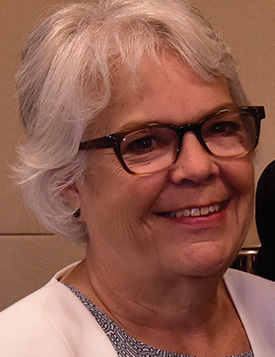NRRTS develops ‘constitution’ for repairs

By Liz Beaulieu, Editor
Updated 9:51 AM CDT, Fri July 21, 2023
 LUBBOCK, Texas – NRRTS, with help from a team of clinicians, has developed a best practice guideline for wheelchair service, preventative maintenance and repair – something the organization hopes will, eventually, serve as a vehicle for better coverage and reimbursement.
LUBBOCK, Texas – NRRTS, with help from a team of clinicians, has developed a best practice guideline for wheelchair service, preventative maintenance and repair – something the organization hopes will, eventually, serve as a vehicle for better coverage and reimbursement.
NRRTS put out the four-page guideline – which was developed by Jack Fried, MS; Mark Schmeler, PhD, OTR/L, ATP; Richard Schein, PhD, MPH; Gede Pramana, PhD; Madelyn Betz, MS, ATP; Weesie Walker, ATP/SMS; and Mark Sullivan using data on component failure rates– for feedback in July.
“If we don’t document best practice, we won’t be able to look forward,” said Schmeler, an associate professor and vice chair for education and training in the Department of Rehabilitation Science & Technology at the University of Pittsburgh. “Every time we have a conversation about repair reimbursement, we’re asked, ‘Why don’t you tell me what you do first, so we can put a value on it.’ When you don’t have a constitution, it leaves it open.”
The guideline, which will go before the NRRTS board of directors before it’s ultimately published by Schmeler and Schein, contains a review of service methods, including the intake process, service environment, remote technology, service encounter, documentation and quality service. It also details provider and consumer responsibilities.
Schmeler and Walker, executive director of NRRTS, both highlight one area of the guideline, in particular, that says service, maintenance and repairs should happen in the office, where technicians have access to more resources.
“I know from my own experience as a supplier, having people come to the shop meant the tech could get more repairs done,” said Walker, who used to be a branch manager for National Seating & Mobility. “The tech could do more for the client. If they didn’t have a part they needed, they could get creative and still make the repair happen.”
NRRTS envisions providers sharing the guidelines with funding agencies to demonstrate the scope of what they do and the need for adequate coverage and reimbursement.
“I think repairs have always been an issue, but in the early days, suppliers and manufacturers could do things for their clients, because there was more wiggle room (financially),” Schmeler said. “Then a lot of factors came into play and that wiggle room got less and less.”
Bigger picture, the guideline is part of increased activity by industry stakeholders to improve access to repairs and prioritize preventative maintenance, helping to stave off right-to-repair bills that are popping up in states across the country.
“If you look at the automotive industry, there are standards for when parts need to be replaced and there are state inspection laws,” Schmeler said. “For wheelchairs, though, there’s this sense that, ‘Let’s wait for things to break and then we’ll fix them.’”
Comments